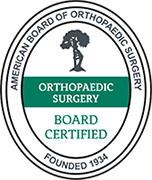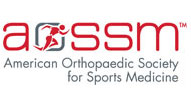What is Foot & Ankle Deformity Correction?
Foot and ankle deformity is the structural abnormality caused by misalignment of the bones of the foot and ankle.
The deformity can be:
- Congenital (inherited and present from birth)
- Acquired (due to injuries, neuro issues, muscular imbalances, infections, etc.)
Foot and Ankle deformity correction is the repair of the abnormality by restoring the normal alignment of the bones in the foot & ankle, surgically or non-surgically.
Indications for Foot & Ankle Deformity Correction
Notable indications for foot and ankle deformity correction can be:
- Difficulty walking due to an unusual gait
- Problems with balance or signs of disability
- Pain in the foot or trouble wearing shoes
- Thick, hard skin (callous) and pressure sores
- Inflammation of the foot and ankle bones
- Pain in the knees, hips, back and head
Preparing for the Procedure
To prepare you for the surgery, your surgeon is likely to:
- Check your general health and review your medical conditions through specific tests.
- Ask you to stop taking any medications or make changes to the dosage or timings.
- Tell you to have a dental check-up and get any problems dealt with to avoid infection.
- Advise you to arrange for safe transport home after the surgery.
- Recommend that you not eat or drink for a few hours before the operation.
Procedure for Foot & Ankle Deformity Correction
Mild deformities can be corrected with non-surgical treatments including physical therapy, orthoses (splints or braces or other artificial external devices), special footwear and medications.
If the deformity is severe, surgery is recommended. The procedure, known as an osteotomy, is performed under general or regional (affecting only the leg or foot) anesthesia.
During the procedure:
- A small incision is made at the site and the affected part is accessed.
- Extra or unwanted bone wedges and soft tissues are cut and removed.
- Bones are realigned, soft tissues are released, and tendons or ligaments are adjusted.
- The bones are held in the correct position and stabilized with tiny wires, pins or plates.
- The incision is closed with small stitches and a dressing or bandage is applied.
Postoperative Care
As you recover from the procedure, you will need to:
- Carefully follow the postoperative instructions
- Provide adequate rest to your foot and ankle
- Ensure minimal weight bearing during initial days
- Check your progress with your surgeon on a regular basis
Additionally, you may be told to use a splint, cast or a brace along with special shoes for a specific period to ensure a safe recovery and prevent the deformity from returning.
Benefits of Foot & Ankle Deformity Correction
Benefits of deformity correction include:
- Minimally invasive procedure
- Near normal, painless and stable foot and ankle
- Improved mobility or function of the foot and ankle
- Allows normal shoe wear and ensures better gait
- Cosmetically improved appearance of the foot and ankle
Risks Associated with the Procedure
As with any surgery, deformity correction comes with risks such as:
- Infection, swelling or stiffness
- Wound hematoma (bleeding)
- Problems of healing
- Blood clots in the leg
- Nerve injury with numbness
- Restriction of joint movement
- Shortened foot
- Development of arthritis later in life
- Additional surgery due to non- or mal-union










